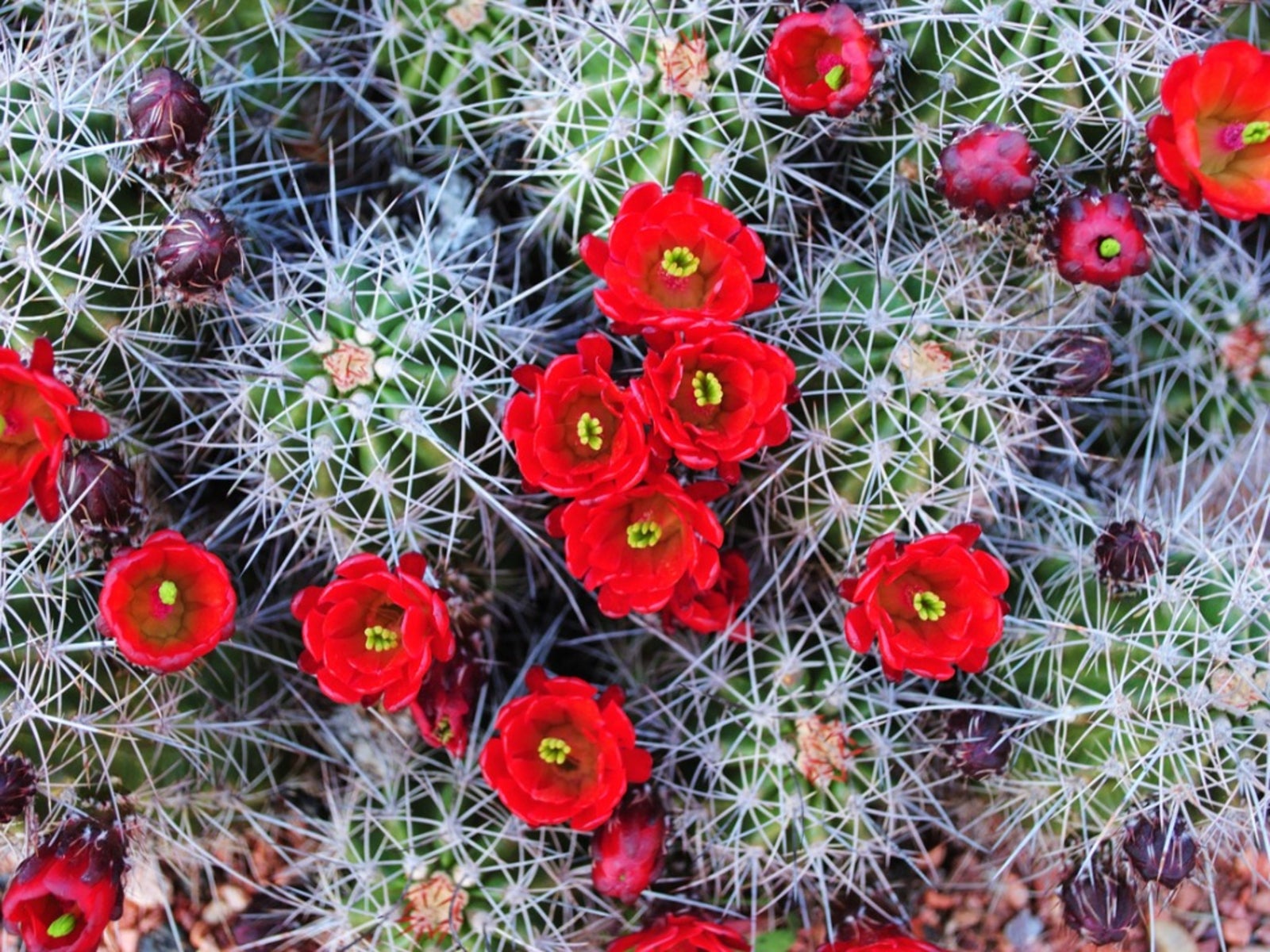Claret Cup Cactus Care: Learn About Claret Cup Hedgehog Cactus


Claret cup cactus is native to the desert areas of the American Southwest. What is a claret cup cactus? It grows wild in Juniper Pinyon woodlands, creosote scrub and Joshua tree forests. This tiny succulent is only hardy to United States Department of Agriculture zones 9 to 10, but you can grow one in your home and enjoy its impressive floral displays. Enjoy this claret cup cactus information and see if this plant is right for your home.
Claret Cup Cactus Information
Plants of the Southwest are particularly appealing to those of us who do not live in these wild desert zones. The sheer variety and wonder of the desert landscape is a treasure even indoor gardeners are keen to experience. Claret cup hedgehog cactus is one of those desert beauties that warm, arid climate gardeners can grow outside in their landscape. The rest of us can try growing claret cup cacti as summer patio plants or indoor specimens. So what is a claret cup cactus? Claret cup is found from California west to Texas and into Mexico. It is a desert dweller that grows in gravel soil. The plant is also known as claret cup hedgehog cactus because of its scientific name, Echinocereus triglochidiatus. The part “echinos” is Greek and means hedgehog. The cactus is small and spiny with a rounded little body, so the name is appropriate. The remainder of the scientific name, triglochidiatus, refers to the clustered trios of spines. The name literally means “three barbed bristles.” These cacti rarely get over 6 inches tall but some are up to 2 feet in habitat. The barrel-shaped form may or may not develop one or many rounded stems with bluish green skin and 3 kinds of spines. If you are very lucky, you may find one in full flower decorated with huge waxy, deeply pink cup-shaped blooms. Claret cup hedgehog cactus flowers are pollinated by hummingbirds, which are attracted to the large amount of nectar and the brightly colored blooms.
Claret Cup Cactus Care
If you are interested in growing claret cup cacti, your first challenge will be to find one. Most nurseries do not grow this species and you should not purchase a wild harvested plant which encourages habitat destruction. The first rule in any cactus cultivation is not to over water. While cacti do need moisture, they are suited to dry conditions and cannot thrive in moist soil. Use a sandy potting mix or cactus mix to enhance drainage and plant the cactus in an unglazed pot to allow excess moisture to evaporate. In open garden situations, this plant will need to be watered every two weeks or as the soil is dry to the touch 3 inches down. Cacti respond well to fertilizer applied in spring and once per month in a liquid dilution during watering. Suspend fertilizing in winter and minimize water applications since this is the plant’s dormant period. Most pests do not bother claret cup cactus but occasionally mealybugs and scale will infest the plant. Overall, claret cup cactus care is minimal and the plant should thrive with some amount of neglect.
Gardening tips, videos, info and more delivered right to your inbox!
Sign up for the Gardening Know How newsletter today and receive a free copy of our e-book "How to Grow Delicious Tomatoes".

Bonnie Grant is a professional landscaper with a Certification in Urban Gardening. She has been gardening and writing for 15 years. A former professional chef, she has a passion for edible landscaping.
-
 Looking For Plants To Give You The Soft And Fuzzies? Try These 5 Fuzzy Leaf Plant Options
Looking For Plants To Give You The Soft And Fuzzies? Try These 5 Fuzzy Leaf Plant OptionsLovers of texture, drama, silver foliage and tactile plants will adore these special sensory garden additions. These fuzzy leaf plant options will leave you all aglow
By Susan Albert
-
 Get Ready For A Summer Of Hummers! Grow These Full Sun Hummingbird Plants and Flowers
Get Ready For A Summer Of Hummers! Grow These Full Sun Hummingbird Plants and FlowersIf you’re lucky enough to enjoy a sunny backyard, make sure you are maxing out on your pollinator opportunities and grow these full sun hummingbird plants and flowers
By Tonya Barnett